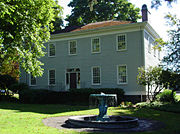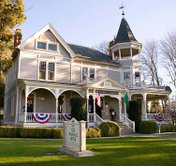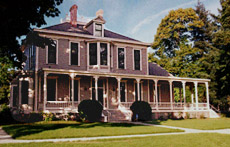|
"Fort Vancouver National Site"
|
 |
| This is The McLoughlin House |
Today, a full-scale replica of the fort, with internal buildings, has been constructed and is open to the public as Fort Vancouver National Site.
One of the most popular spots is Fort Vancouver/Officers Row. It is the only entire row of officer's preserved historic homes in the nation. Officers Row is a beautiful setting filled with twenty-two fully-restored nineteenth century homes situated on twenty-one acres just north of the Vancouver Barracks Parade Grounds.
Today: Officers Row is a delightful environment in which to live and work. Interesting to lease, call: Fort Vancouver National Trust at 360.992.1800
 |
| TheGeorge C. Marshall House |
Today, the Marshall House is decorated with antiques from the 1880s. It is open to the public and can be reserved for conferences, public ceremonies and social gatherings.
 |
| This is General O.O. Howard House |
Today The Howard House is the office of Fort Vancouver National Trust, and do provide information to drop-in visitors.
The Grant House the oldest building remaining at Vancouver Barracks. Ulysses S. Grant was stationed at Vancouver garrison in the 1850s as a quartermaster. He returned as a visitor to Vancouver Barracks in 1879 after serving two terms as President of the United States. The Grant House later served as an officers club for over a quarter century.
Today, the building is open to the public and houses The Restaurant at the Historic Reserve.
Visitor Center
Call (360) 816-6230 for more information or : Visit the Official Website
There's so much to see and do at the Fort Vancouver National Site's 366-acre campus. Take a self-guided tour of the multiple attractions, including historic Fort Vancouver, Pearson Air Museum, walking trails, Officers Row, and much more.
Groups of any size, small and large, from elementary school classes (both in Oregon and Washington),churches, retirement communities, conventions, reunions and the Red Hat Society are booking guided tours at Fort Vancouver National Site.
Fort Vancouver National Trust operates two on-site retail shops. Both are full-service bookstores and are members of Pacific Northwest Booksellers Association.
From Fort Vancouver National Site to Retire to Vancouver, Washington
Return to Home





